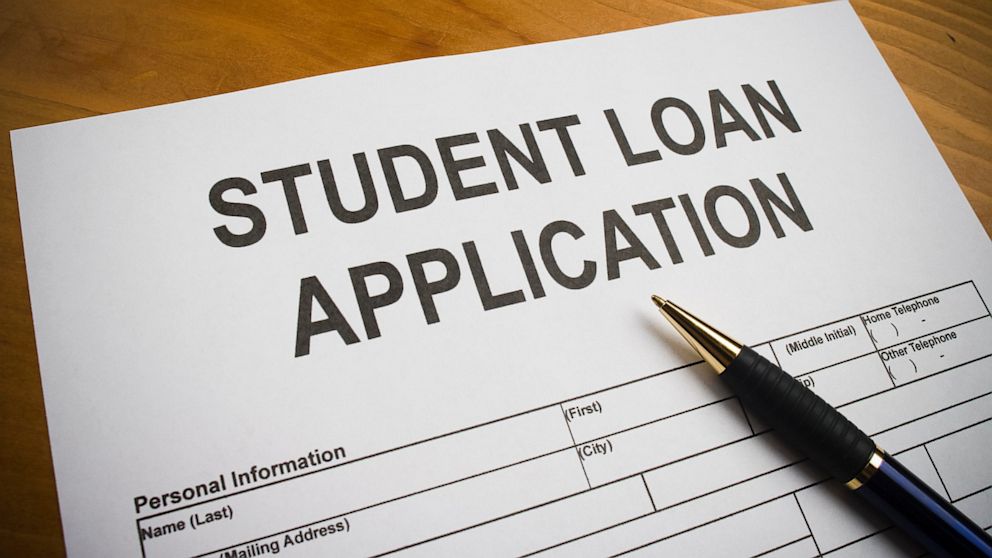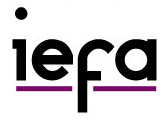Monday, 21 October 2013
Sunday, 20 October 2013
Recruitment For Project Engineer In Centre for Development of Advanced Computing (CDAC) – Andhra Pradesh
Project Engineer - I
Centre for Development of Advanced Computing
 Address: 1, Shivbagh, Ameerpet
Address: 1, Shivbagh, Ameerpet
Postal Code: 500016
City Hyderabad
State Andhra Pradesh
Pay Scale: Rs. 31,000/-
Educational Requirements: First Class B.E/B. Tech or equivalent degree in Electronics & Communication Engineering/Computer Science Engineering
Experience Requirements: 1 year post qualification work experience in the relevant field.
Details will be available at:http://cdachyd.in/career/project_engineer-I
No of Post: 03 Posts
General Conditions: Only Short-listed candidates will be called for interview. Candidates will be informed by email only and no separate communication will be sent. At the time of interview, they should bring Original Certificates of qualifications and experience and a photocopy of the same. SC/ST/OBC candidates should submit necessary certificates of proof. No TA /DA will be paid for appearing for the interview. C-DAC reserves the right to fill up the post or increase/decrease the number of posts or even to cancel the whole process of recruitment without assigning any reasons thereof. Canvassing in any form and bringing any influence, political or otherwise will be treated as a disqualification for the post applied.Candidates are advised to keep checking the website (www.cdachyd.in) for any information updates.
Last Date: 31-10-2013
Age Limit: 34 Years
Education Loan In PNC BANK USA

Financial Literacy Education
PNC is your comprehensive source of financial aid and personal finance education. Learn to minimize college debt by making smart financial choices. Sample a single multimedia module or take the entire course.
As a college student, you already know that college can be a demanding experience. From maintaining your grades to making new friends, each day presents its own challenges. But for many students, college also presents a very real financial challenge. In fact, attending college is one of the single largest expenses most adults will ever have. If you receive financial aid, you know that the amount of aid your receive is often determined by factors you can't control, like your parents' income, the cost of your school, and how each school calculates financial need. But once you arrive on campus, you're in total control of your spending decisions, perhaps for the first time.
Choosing the Right Loan
Choosing the right loan is important for minimizing overall education cost.
Student loan choices can make a real difference in both cost and convenience. Federal loans may offer loan forgiveness options in which some or even the entire loan is repaid based on the work students do after college while private loans may offer discounts off the interest rate.
That said, once federal loan limits are maxed out, private loans can be a sensible choice - as long as you pick the right one.
Before choosing any education loan, make sure you can answer the following questions:
Is the loan a federal or a private loan? Federal loans should be the first choice.
What is the loan interest rate? Private loan interest rates typically vary depending on the borrower and co-signer credit history. Private loans are often subject to credit approval and other required criteria.
Will you be required to make loan payments or pay interest while you are enrolled? Paying interest while in school is a good idea, but ideally it should be an option, not a requirement.
If you do not pay interest while enrolled, how often will interest be capitalized or added to the remaining principal on your loan? The more frequent the capitalization, the more expensive the loan is likely to be (provided you are comparing with another loan with the same interest rate).
Will the lender also be the ongoing loan servicer or will the loan be sold or transferred for service once it is made?
Who will be your servicer?How easy is it to access the lender and servicer by web, phone or in-person? If you have questions, you need an easy way to get answers.

How Are Federal Loans Repaid?
You can repay your loans by sending monthly checks to your loan servicer or you can set up monthly automated payments deducted from your bank account. Automated payments reduce the chances of a missed payment, which can mean additional fees and higher interest rates. Some lenders and loan servicers offer an interest rate discount if you set up automated payments from a bank account.
There are several different options for structuring the amount of your monthly payments on federal loans:
Standard Repayment Schedule: You pay a fixed amount throughout your repayment period, which is usually up to 10 years. If you can handle the monthly payments, which start higher than other options but remain the same throughout repayment, this plan enables you to pay off your loan as soon as possible. This option is typically the least expensive repayment option overall, since you pay less interest.
Graduated Repayment Schedule: This schedule begins with a lower monthly payment amount than the Standard Schedule and then increases the amount on a periodic
Education Loan In WELLS FARGO USA

Student Loans for College
Wells Fargo GraduateSM Loan
A Wells Fargo Graduate Loan is designed for graduate students who are seeking MBA, law, or other graduate degrees, and who want to qualify for a loan on their own without a cosigner.
Cover the cost of education, including tuition, fees, books, living expenses, and more.
Benefits:
Make no payments until six months after leaving school.
Pay no application, origination, or early repayment fees.
Select a competitive fixed or variable interest rate option.
Reduce your loan cost with our interest rate discounts.
Most students can qualify on his or her own without a cosigner. However, a cosigner may potentially help you get a lower interest rate.

MedCAP® Loan for Health Professionals
A Wells Fargo MedCAP Loan is designed for students in medical, nursing, dental, and other health-related programs.
Cover cost of education, including tuition, books, lab supplies, computers, or living expenses.1
Benefits:
Make no payments until six months after leaving school (up to 60 months for M.D. and D.O. students).
Pay no application, origination, or early repayment fees.
Select a competitive fixed or variable interest rate option.
Reduce your loan cost with our interest rate discounts.
Most students can qualify on his or her own without a cosigner. However, a cosigner may potentially help you get a lower interest rate.
For More DetailsClick HereJPMorgan Chase exits student loan business

Uncle Sam has pushed another bank out of the $1.2 trillion student loan sector.
JPMorgan Chase, which has been steadily backing out of the classroom over the past few years, said yesterday it would exit student loans on Oct. 12.
Since 2010, when Congress allowed Washington to lend directly to students, government loans have grown to dominate the business — owning an 80-percent-plus market share.
From 2011 to 2012, Uncle Sam wrote 93 percent of the $105 billion student loans originated, according to Consumer Bankers Association.
Reflecting that change, Jamie Dimon’s JPM has seen revenue from student loans fall from $6.9 billion in 2008 to a pedestrian $200 million, according to bank officials.
It is not clear how the exit of the country’s No. 1 bank from student loan will affect students.
JPMorgan has informed some 200 universities and colleges via memo that it was heading for the exits.
Last year, JPMorgan said it would no longer offer student loans to non-customers.
Government loans under the Direct Loan program come with lower interest rates and are guaranteed to all students.
Private bank loans require better credit scores.
With the pressure from Washington, Dimon views student loans as a marginal money maker.
The entire private lending industry has shrunk by nearly 75 percent, with student lending totaling roughly $6 billion in 2012 compared to a robust $23 billion in 2008, public data show.
Bank of America exited student lending in 2009, followed a year later by Citigroup. Last year, US Bancorp exited the game.

Student loans have grown 20 percent over the 17 months through May 2013, according to the Consumer Financial Protection Bureau, which in July estimated total outstanding student loan debt stood at $1.2 trillion.
In addition to pressure from Washington, banks could also be tempted to exit student loans because of risk. Some industry observers have described student loans as the next bubble given the growing cost of college tuition and spiking rates.
“The biggest concern we see is loans are more restrictive while education has become more expensive,” said George Janas, president of Consumer Debt Counselors.
Indeed, since 1980, college tuition and fees have swelled by 1,100 percent — four times the rate of inflation, according to CBA.
Janas said that the decline of private lenders could make it more difficult for student loan borrowers to obtain a loan but also noted that a lot of borrowers aren’t understanding the risk associated with obtaining school debt.
JPMorgan told the colleges and universities it works with that it will still continue to service applications in the pipeline.
Sallie Mae, Wells Fargo and Discover are the top three lenders in the private student lending arena.
In the wake of JPMorgan’s announcement, Wells said that it would continue to be a student lender
“We are committed to the private student lending business and offering products and services that help customers succeed financially,” John Rasmussen,Wells Fargo head of Education Financial Services, asserted in a statement.
Education Loan In USA International Student Loans

Student Loans for International and Study Abroad Students
If you are looking for a student loan to fund your international education, we can help. Whether you are an international student in the US or a US student studying abroad – finding a student loan doesn't have to be difficult and with our student loan comparison tool you can find the right loan in seconds – and then apply online.
Why International Student Loans?
Studying overseas is expensive, and many students struggle to fund their international studies. Scholarships and grants are available, but they are very competitive and rarely cover all of your expenses. A loan can cover up to the total cost of attendance, as determined by your school, minus any other aid received.
Here are just a few of the costs your international student loan will cover:

.Tuition
.Room and board
.Books and supplies
.Travel and transportation
.Health insurance
.Living expenses
Even if you already have been awarded financial aid, you may find that you are still coming up short. In cases like these, international student loans can cover the difference – or they can cover the total cost of your education.
Use full linkhttp://www.internationalstudentloan.com/
International Student Loans IEFA

International Student Loans
IEFA has partnered with the leading provider of international student loan programs to provide students around the world with financial aid options to fund their education abroad. Through this site, you will gain access to the only loan comparison tool designed specifically for international students. Simply enter in your information to the loan widget and you will be shown the loan options that are available to you. There are up to 8 lenders who are currently providing financial aid to international students, and more will be added as time goes by so start searching today!
How do I apply for a student loan?
You can compare lenders and apply right online. Instant approval of your loan can be as quick as a few weeks.Click here to start your loan application.

Who is eligible to apply for international student loans?
Students who are not U.S. citizens or non-citizen permanent residents and who are attending an eligible U.S. college or university. Borrowers are required to have a creditworthy cosigner who is a U.S. citizen or a non-citizen permanent resident. Students who are not U.S. citizens or non-citizen permanent residents and who are attending schools outside the U.S. are not currently eligible for our loans.
I'm a non-US citizen nor a US-permanent resident studying in a destination outside the US, am I eligible for a loan?
Unfortunately, our loan programs are for international students from anywhere in the world studying in the United States, or for US students studying abroad. We do not currently have a program for international students studying elsewhere in the world, even with a US co-signer.

When I take out a student loan, how much do I pay back and when?
The interest rate and repayment will depend on the loan option and lender you select. After you select the loan that works best for you, you will need to review the terms or contact the lender directly with your questions. The interest rate is calculated based on an index plus a margin that will add an additional percentage interest rate depending on your cosigner's creditworthiness. Based on their creditworthiness, an additional interest rate will be added to the index which will be the total interest rate you owe and at that point you can determine whether you'd like to proceed. Every lender's range varies so it is important to do the loan comparison and review the interest rate and repayment terms.
For more detailsClick hereEDUCATION LOAN IN USBANK

Loans 101 for Students
You've made the decision of a lifetime – you want to go to college. Now it's time to figure out how to pay for it. We’ll guide you through the financial aid process and help you determine the best ways to finance your education.
Paying for College
fore you take out a private loan, exhaust other options first, including scholarships, grants and federal loans. Also, be sure to fill out theFree Application for Federal Student Aid(FAFSA).
What Can I Afford to Borrow?
Taking out a student loan is a big responsibility. The following guidelines will help you make informed decisions.

Determine Your Future Income
One way to determine the amount of debt you can handle is to estimate earnings after graduation. Since it’s difficult to predict the job market and how long it will take to land a job, be conservative. For help determining average earnings for specific careers, consult the U.S. Department of Labor, Bureau of Labor Statistics.
Set a Budget
Your monthly student loan payment should not be more than 8% of your monthly salary. When calculating your income, factor in other debts (e.g., credit cards) as well as day-to-day living expenses. To estimate your monthly budget, enter your estimated income and expenses in our monthly budget helper.
Borrow Wisely
To assist you in planning how much you can afford to borrow, check out our loan repayment calculator.
Be Smart About Credit
Establishing, building and maintaining good credit couldn’t be more important. It will affect your ability to rent an apartment, apply for a mortgage and even get a job. Be aware that when you take out a student loan, it will be reflected on your credit report, as will your history of repaying that loan.
Student loans In Australia

Student loans
What is it?
In addition to the flexible payment options for each AIE course, students may like to investigate the options available through various financial institutions across Australia. AIE is nationally accredited as a Registered Training Organisation and students enrolled in a full time course should qualify for most tertiary student loan packages.
Some packages that are available include:
National Australia Bank Tertiary Student Loan This loan package offers students deferred payment options for loan amounts up to $20 000. More information and application criteria can be found on theNAB website.
Commonwealth Bank Campus Loans
Low interest and deferred payment options are available through the Commonwealth Bank Campus Loan. More information and application criteria can be found on theCommBank website.
ANZ bank
ANZ has a range of loans available, including graduate loans. More information is available on theANZ website
Other financial institutions such asSt George, Citibank, ING Directand more may also have student loan packages available. AIE strongly encourages all students to look at various loan products before making a final decision. If at any time you need help regarding course fees or loan options, please don't hesitate tocontact us.
Graduate Loan in Australia
Graduate Loan
An ANZ Graduate Loan could assist you to pay for that new car, upgrade your laptop or even take a well deserved holiday. No repayments are required for the first year of the loan! If you are a recent graduate with an offer letter for employment in your current field of study, and a permanent Australian resident, you could be eligible for an ANZ Graduate Loan. You need to apply within 6 months of your course completion and have not yet commenced the position stated in your letter of offer. No repayments are required for the first year of the loan.
If you are a recent graduate with an offer letter for employment in your current field of study, and a permanent Australian resident, you could be eligible for an ANZ Graduate Loan. You need to apply within 6 months of your course completion and have not yet commenced the position stated in your letter of offer. No repayments are required for the first year of the loan.| Loan Features | ||
|---|---|---|
| Loan term | From 1 to 7 years | |
| Minimum loan amount | $5,000 | |
| Maximum loan amount | No maximum loan amount set | |
| Repayment frequency | No repayments required for the first year of the Graduate Loan. (Interest and fees are accrued and debited to the loan during the 12-month repayment deferral period). | |
| Additional repayments | You have the freedom to increase your repayments at any time. This means you can choose to pay off your loan faster and save on interest costs1. | |
| Redraw facility | Not available | |
| ANZ Loan Protection (optional)2 |
Not available
| |
| Variable interest rate4 | Interest rate from 14.09% p.a. Comparison rate3 from 17.21% p.a. | |
| Fees and charges |
| |
Education Loan In Australia.edu
Welcome to australia.edu

Educate yourself about Student Loans
Completing university is a very tough process. You must work hard and spending a lot of time studying, therefore you do not need the extra stress that lack of finances can bring. You are investing in your future with a university education and there is a lot of evidence which suggests that getting a degree will give you many job opportunities and the potential to earn much more during your career.

Fortunately, the Australian government and many banks offer various loan programs to assist you in your finances and supporting yourself during your university studies. A number of these programs allow you to defer your payments until you have graduated or completed your studies and some of the programs even defer the interest until you have completed your course of study. You need to assess all your options and your financial situation in order to pick the student loan that best fits you.
It is pretty easy to get a student loan. Lending institutions understand that most college students will probably not have a solid money situation or consistent stream of revenue; therefore the loans that you receive are based on your future income potential after your study. Some of the loan programs will require you to have a co signer or guarantor who will support the repayment terms if you are unable to pay it. The guarantor is typically a parent or guardian.

The best option for student loans are government programs because they typically offer the best loan repayment terms. The reason for this is because the government is not trying to make profits off of your loan as a bank would. If you receive a government student loan, repayments will not be necessary and you will not build up interest until you file a tax return that show that you are making over 40,000 dollars per year. This is the best type of government student loan because it gives you the lowest cost option for funding your study.
Not everyone is qualified to get a government student loan and even those that are qualified may notice that they are not given enough money to cover all of their educational expenses. These are the people who will need to dive into private student loans in order to cover their expenses. A bank or lending institution will offer you a student loan that is typically below the general personal loan, making it an appealing offer for most students. Furthermore, many of these programs will permit you to put off payment on the loan for some time, generally after you complete your study, and many times even longer than that. As a result, you are given time to enter the job market and begin your career without worrying about paying off your loans. The one down side to these loans is that you will be accruing interest starting from the date you take out the money and the amount of interest that piles up can be significant.
Furthermore, many of these programs will permit you to put off payment on the loan for some time, generally after you complete your study, and many times even longer than that. As a result, you are given time to enter the job market and begin your career without worrying about paying off your loans. The one down side to these loans is that you will be accruing interest starting from the date you take out the money and the amount of interest that piles up can be significant.
As a result, just a slight difference of a half of a percentage point could potentially make a large difference in the amount you will eventually be obliged for. It is strongly recommended that you do some research for the loans that will be the most suitable for you.
Educational Loans Indian Overseas Bank

Educational Loans-Vidya Jyoti
Eligibility
Should be an Indian National
Should have secured admission to professional/technical courses in India or abroad
Purpose
Loan is made available for Graduation/Post graduation/Diploma/Computer education in any recognized State/Central Government/University, professional courses including Engineering, Medical, Agriculture, Veterinary, Law, Dental, Management, courses like ICWA, CA, CFA, etc., courses conducted by IIM, IISC, XLRI, NIFT etc, courses offered in India by reputed foreign universities/Evening courses of approved institutes, regular degree/ diploma courses like Aeronautical , Pilot training , shipping etc approved by Director General of Civil Aviation/ shipping if the course is pursued in India. Incase the course is pursued abroad, the institute should be recognized by the competent local aviation/ shipping authority. For studies abroad, loans will be made available only for Graduation and Post Graduation Courses offered by Reputed Universities and not for diplomas
Apply OnlineQuantum of loan
Maximum of Rs. 30.00 lakhs for studying in India and Rs. 40.00 lakhs for studying abroad.
RepaymentRepay the loan in equal monthly Instalments for a maximum period of 5 - 7 years excluding holiday period.
Interest servicing
It is left to the option of the student either to service the interest during the study period or pay it along with the principal over a period of 5 - 7 years to commence from 12th month after completion of the study.
Education Loan In Indian Bank

Education Loan In Indian Bank
Indian Bank provides convenient educational loans for meritorious/deserving students to acquire knowledge and skill in the field of their interest. By playing beacon, new-generation's quest for success is ably supported, paving way for Generation Banking.
» Apply Online for Educational LoanEligibility
The applicant should be an Indian National. He / She should have secured admission to professional / technical courses in India or abroad through Entrance Test / Merit based selection process..
Course of Study
Studies in India
Diploma/Graduation/Post-graduation courses in various disciplines. Computer certificate courses of reputed institutes accredited to The Department of Electronics.
Studies Abroad
Job-oriented professional/technical courses offered by reputed universities. MCA, MBA, MS etc. Courses conducted by CIMA - London, CPA in USA etc.

Maximum Permissible Amount of Loan
.For Studies in India - Rs.10.00* lakhs
.For Studies Abroad - Rs.20.00* lakhs
* Higher quantum of loan also can be considered in deserving and meritorious cases.
Security *
Documents should be executed both by the student and parent / guardian as joint borrower.
1. Upto Rs. 4 lacs - No security
2. Above Rs. 4 lacs & Upto Rs.7.50 lacs - Collateral in the form of satisfactory third party guarantee
3. Above Rs.7.50 lacs - Co-obligation of parents / guardians together with tangible collateral security of suitable value along with assignment of future income of the student for payment of installments.
For More Details Visit HereEducation Loan In Central Bank Of India

| ||||||||||||||||||||||||||||||||||||||||||||||||||||||||||||||||||||||||||||
Education Loan In Andhra Bank

I. Educational Loans for Higher Studies in India and Abroad.
Student Eligibility
.The student should be an Indian National
.NRI-if student is holding Indian PassPort. (Suitable Collateral Security enforceable in India is to be provided for all such proposals.)
.For the purpose of this scheme higher education is defined as studies taken up after completion of higher secondary school i.e. Ten plus two stage
.Should have secured admission to a higher education course in recognized institutions in India or Abroad through Entrance Test/ Merit Based Selection process after completion of HSC(10 plus 2 or equivalent).
.In case where admission is not through common entrance test and the marks secured in the qualifying examination is the only criteria adopted, the minimum cut off marks should be 65% in aggregate in the qualifying academic examination.
.The cut-off of 65% marks in aggregate in the qualifying academic examination is also applicable to all courses offered by deemed universities and also to non-professional and non-technical courses, irrespective of the common entrance test.
.The revised Model Educational Loan Scheme (2011) covers only merit channel seats for the courses. Admissions through management quota are outside the purview of IBA Model Scheme on Educational Loans for Higher Studies. However we may consider sanction of loans to students securing admissions under management quota with a suitable collateral security of not less than 150% value of the sanctioned limit irrespective of quantum of loan whether it is below Rs. 4 lakhs or above Rs. 4 lakhs.

|
Subscribe to:
Posts (Atom)












